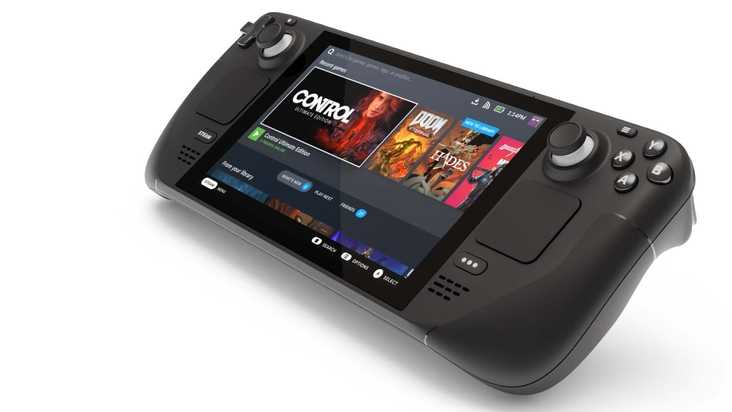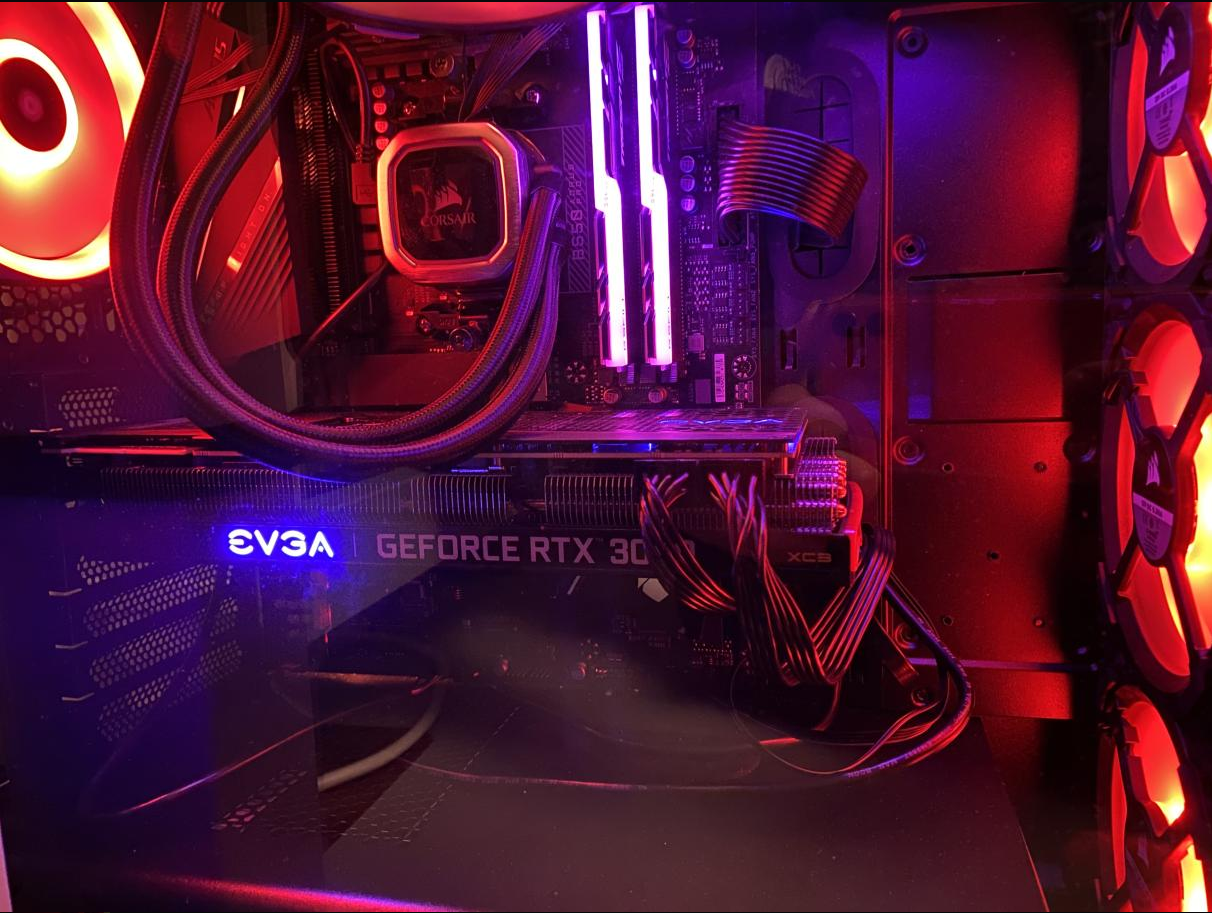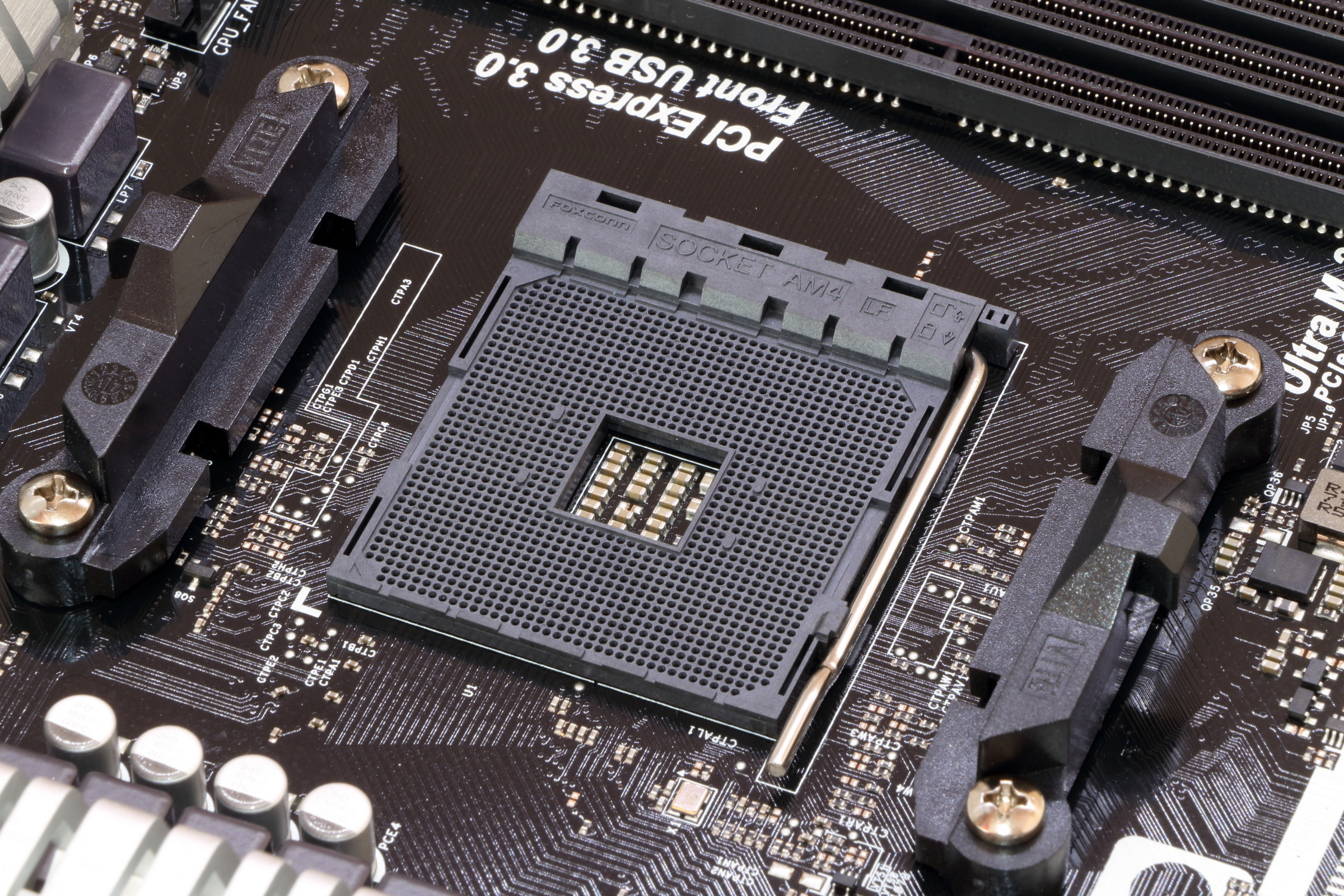
Image Credit: Eurogamer
Steam is an application owned by essentially every PC gamer. Valve made controllers and VR headsets in the past but these products didn’t make a name for them. However, that might change today as Valve has announced the Steam Deck, a handheld/PC hybrid that allows you to play all kinds of PC games on the go.
The Steam Deck includes an APU from AMD with four cores and eight threads on the Zen 2 architecture clocked at 2.4 GHz to 3.5 GHz while combining 8 RDNA 2 CUs clocked at 1.0 GHz to 1.6 GHz, along with a claim of 1.6 TFLOPs of performance, and 16 GB of LPDDR5 RAM. Additionally, the Steam Deck runs on an Arch-Based OS called Steam 3.0. There are three different models of the Steam Deck. The base model is $399 and comes with 64 GB of eMMC internal storage and a carrying case. The next model is $529 and contains 256 GB of NVMe SSD storage (which is faster than the eMMC storage), an exclusive Steam Community profile bundle, and a carrying case. The final model is $649, containing a 512GB NVMe SSD, “premium” anti-glare etched glass, an exclusive carrying case, an exclusive virtual keyboard theme, and the exclusive Steam Community profile bundle from the previous model.
(Note: both NVMe SSDs are on PCIe Gen 3 x 4, and the eMMC drive is PCIe Gen 2 x1. All models include a microSD slot for additional storage capacity)
The 7″ touch screen display is an optically bonded LCD screen (Essentially just a protective glass that is glued in front of the screen), with a resolution of 1280 x 800 with a 16:10 aspect ratio, 400 nits of brightness, along a 60 Hz refresh rate. The Steam Deck also has a 40Whr battery which should provide for two to eight hours of gameplay. It also has a 45W USB Type-C for charging and expansion plus Bluetooth 5.0 along with 2.4 and 5 GHz WiFi. Additionally, it has a 3.5mm stereo headphone jack along with Dual-array Microphones.
Now, this is where the most console element comes in. The Steam Deck also has a Dock sold independently that you can attach to the Steam Deck which will connect to a TV or monitor with DisplayPort 1.4 and HDMI 2.0. The Dock has three USB Type-A ports (one being USB 3.1 and the rest being USB 2.0), USB C power delivery, and an Ethernet port
One thing that doesn’t make too much sense to me is what Valve has to gain profit-wise. Most consoles are sold at a loss, but it’s made up with monthly subscriptions for online play (Xbox Live Gold, PS Plus). Valve can’t do that because subscriptions for online play on PC games don’t exist, and it wouldn’t be wise of Valve to introduce it all of a sudden. So my theory from where Valve’s profits are coming from here will be from microtransactions involving the Steam Deck. My logic comes from their more high-priced model benefits like an “Exclusive Virtual Keyboard Theme”. Little things like that cost a minimal amount and might add up to a profit for Valve.
This feels like Valve’s way to compete with console gaming and possibly cloud gaming like Xbox Cloud gaming and Google Stadia with their play from anywhere use case. I think for the price, you might as well get a console or save up for a PC. If you want to play PC games on the go, it might be better to go the extra mile and get a laptop that would come with better performance. I also believe that this probably should’ve been released before the next-gen consoles because now you have to compete with the Xbox series X and PS5, which outperform the Steam Deck by miles.
However, it doesn’t look like Valve is trying to compete with those consoles. Instead, this is Valve’s way to compete with Nintendo and their Switch. After the massive letdown from Nintendo for a possible switch pro that was just a regular switch with an OLED screen, you have Valve coming up with something that can display up to 8k at 60hz and 4k at 120hz, while the Nintendo switch cannot even display at 4k. It makes sense why Valve would want to get into the handheld gaming market as Nintendo has been the king there for decades with the Gameboy, Nintendo DS, and Switch, with the only real competition being Sony’s PS Vita and PSP. Nintendo hasn’t done anything to protect that market besides their iconic games and characters. Still, now when there is a significant letdown for the future performance of the Switch, Valve might come and take the crown.
So that’s the next chapter of Valve’s quest to handheld gaming domination, and we will see if it plays out in December 2021 and if it’s possibly a better alternative to the Nintendo Switch.
(LIST OF FULL SPECS):
Compute
Processor
AMD APU
CPU: Zen 2 4c/8t, 2.4-3.5GHz (up to 448 GFlops FP32)
GPU: 8 RDNA 2 CUs, 1.0-1.6GHz (up to 1.6 TFlops FP32)
APU power: 4-15W
RAM
16 GB LPDDR5 RAM (5500 MT/s)
Storage
64 GB eMMC (PCIe Gen 2 x1)
256 GB NVMe SSD (PCIe Gen 3 x4)
512 GB high-speed NVMe SSD (PCIe Gen 3 x4)
All models include high-speed microSD card slot
Controls and Input
Gamepad controls
A B X Y buttons
D-pad
L & R analog triggers
L & R bumpers
View & Menu buttons
4 x assignable grip buttons
Thumbsticks
2 x full-size analog sticks with capacitive touch
Haptics
HD haptics
Trackpads
2 x 32.5mm square trackpads with haptic feedback
55% better latency compared to Steam Controller
Pressure-sensitivity for configurable click strength
Gyro
6-Axis IMU
Display
Resolution
1280 x 800px (16:10 aspect ratio)
Type
Optically bonded LCD for enhanced readability
Display size
7″ diagonal
Brightness: 400 nits typical
Refresh rate: 60Hz
Touch enabled: Yes
Sensors: Ambient light sensor
Connectivity: Bluetooth, Bluetooth 5.0 (support for controllers, accessories and audio)
Wi-Fi: Dual-band Wi-Fi radio, 2.4GHz and 5GHz, 2 x 2 MIMO, IEEE 802.11a/b/g/n/ac
Audio
Channels: Stereo with embedded DSP for an immersive listening experience
Microphones: Dual microphone array
Headphone / mic jack: 3.5mm stereo headphone / headset jack
Digital: Multichannel audio via DisplayPort over USB-C, standard USB-C, or Bluetooth 5.0
Power
Input: 45W USB Type-C PD3.0 power supply
Battery: 40Whr battery. 2 – 8 hours of gameplay
Expansion: microSD, UHS-I supports SD, SDXC and SDHC
External connectivity for controllers & displays: USB-C with DisplayPort 1.4 Alt-mode support; up to 8K @60Hz or 4K @120Hz, USB 3.2 Gen 2
Size and Weight
Size: 298mm x 117mm x 49mm
Weight: Approx. 669 grams
Software
Operating System: SteamOS 3.0 (Arch-based)
Desktop: KDE Plasma




